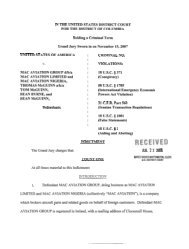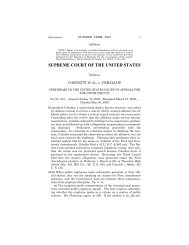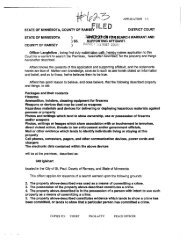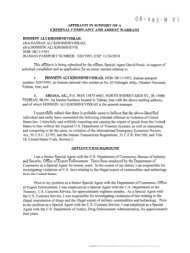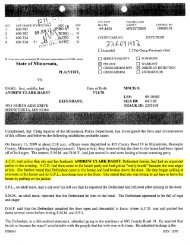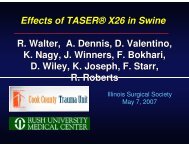TASER Electronic Control Devices Review Of Safety Literature
TASER Electronic Control Devices Review Of Safety Literature
TASER Electronic Control Devices Review Of Safety Literature
You also want an ePaper? Increase the reach of your titles
YUMPU automatically turns print PDFs into web optimized ePapers that Google loves.
This gives a safety margin of 74:1 = 140 mA ÷ 1.9 mA for the X26 and M26.<br />
Beigelmeier Model: 74:1 <strong>Safety</strong> Margin<br />
Beigelmeier’s model holds that long-term AC (5 seconds or more) requires 1/20 th<br />
of the current to fibrillate as does a single 20 ms (millisecond) pulse (which single<br />
pulse would have to be into the T-wave). 17 The single pulse VF threshold can be<br />
predicted from the Jones and Geddes study which found a ratio of 52:1 for a 10<br />
ms pulse (the widest pulse they investigated). This would give a single 10 ms<br />
pulse a VF threshold of 1.4 A = 52 • 27 mA.<br />
Dividing this by Beigelmeier’s ratio of 20 gives a predicted AC threshold of<br />
70 mA. Doubling this for humans gives a human threshold of 140 mA and a<br />
safety margin of:<br />
74:1 for the <strong>TASER</strong> X26 and <strong>TASER</strong> M26<br />
(which matches the results from the Knickerbocker model)<br />
Dalziel Model: 84:1 <strong>Safety</strong> Margin<br />
In the 1960s Dalziel performed a meta-analysis of VF thresholds for mammals. 38<br />
This is shown in Figure 8. This includes the animal fibrillation data from Ferris<br />
dating back to the 1930s. 39 Conservatively, Dalziel included swine which are very<br />
easy to fibrillate due to subtle cardiac conduction system differences. 40<br />
The average current required to cause fibrillation is given by the formula:<br />
I = 3.68 W + 28.5 mA<br />
Where W is the body weight in kg. For lbs (pounds) the formula is:<br />
I = 1.67 W + 28.5 mA<br />
For a typical excited delirium arrest-related death of 200 lbs (91 kg) 41 the average<br />
current required to fibrillate would be:<br />
I = 362 mA<br />
which gives an average safety margin of 191:1. However, Dalziel recognized that<br />
sensitivities to electrical currents vary and he thus performed a statistical analysis.<br />
He plotted the lower limit of sensitivity as the middle line in the figure. Note<br />
that this middle line gives a fibrillating current of over 170 mA for a 200 lb resisting<br />
human subject. This gives:<br />
<strong>Safety</strong> margin<br />
= 170 mA ÷ 1.9 mA<br />
= 89:1<br />
30




